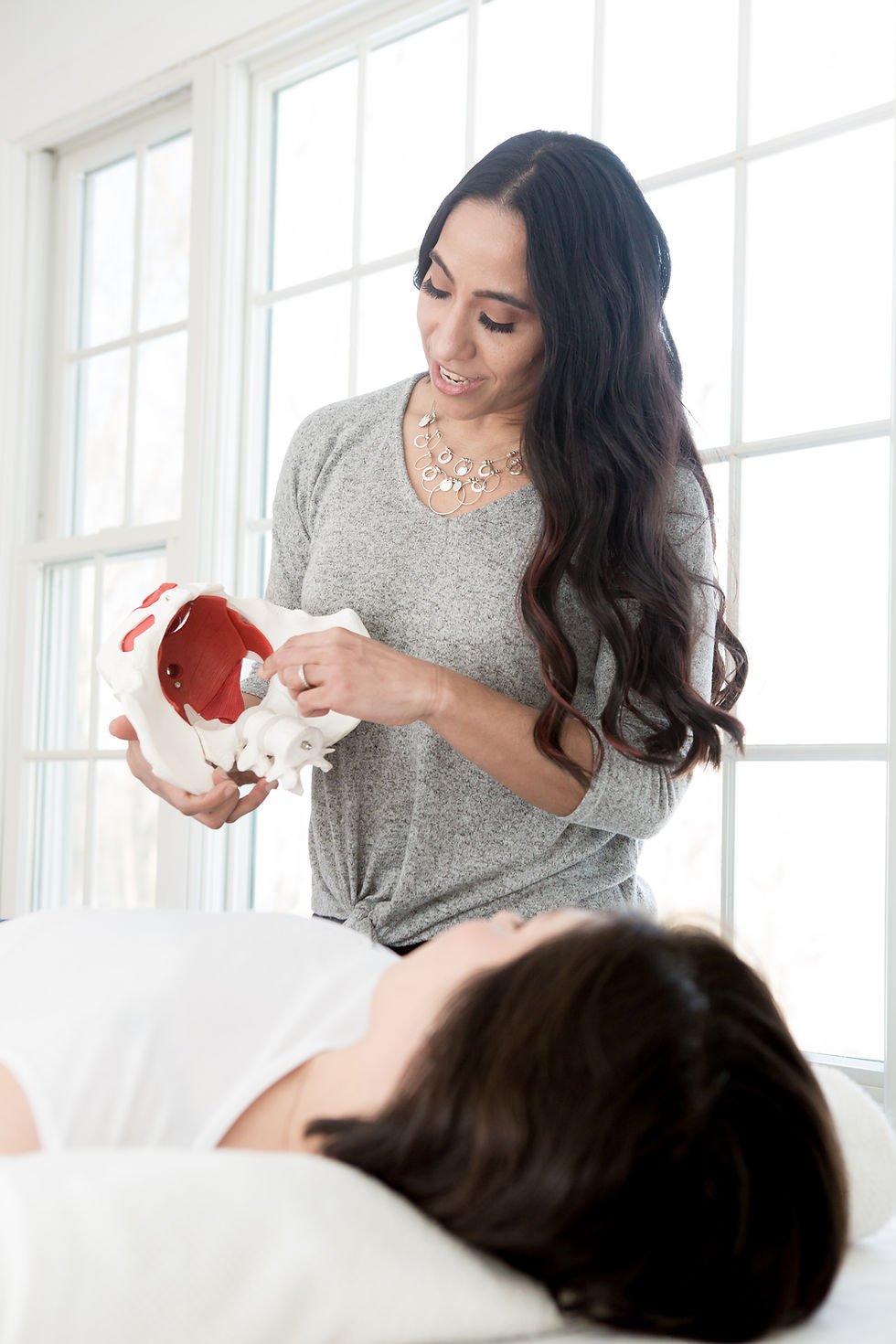A Pelvic Floor Exam Is Different
- Nicole Muriel / PivOTal Performance

- Apr 14, 2022
- 4 min read
Updated: Dec 29, 2022
What does an OB-Gyn Look at?
An OB-gyn is looking for problems in the external and internal reproductive organs, tissue mass/growths, pain, discharge, irritation/redness, which may be signs of infection or illness.

What does a pelvic floor therapist look at?
A pelvic floor therapist is looking for problems in the external and internal muscles, bones, and tissues of the pelvis. A close look is taken when assessing specifically the pelvic floor. A pelvic floor therapist is investigating the root cause of an individual's pelvic floor dysfunction, such as pain, bladder disorders, sexual dysfunction, prenatal and postpartum problems, bowel dysfunction, etc. We are also taking a close look into core function and strength. Your core is made of up your diaphragm, abdominal muscles, and back, and pelvic floor muscles. Your therapist is also assessing how all these muscle groups function together.
What does an OB/GYN exam look like?
During this exam, there is an external and internal screen/assessment. The most common position is on your back with your feet in stirrups. You will be asked to slide your bum down on the table. This gives the OB-gyn easier access to the pelvis.
During the external portion of the exam. The OB/GYN will take a visual assessment of the vulva and around the labia to rule out any masses, discharge, or other skin conditions. The second part of the exam is assessing Internally. This is actually a 2 part process, the first is the speculum exam and then the bimanual exam. During the speculum exam, your doctor will slide a lubricated metal or plastic speculum to separate the walls of your vagina as the speculum opens. This allows your doctor an easier view of your cervix to scrape for a Pap test. Inserting a speculum may feel uncomfortable with pressure, but it should not be painful. If it is, mention it to your doctor. The bimanual exam is when your doctor inserts 1 or 2 gloved and lubricated fingers into your vagina. Then gently presses on your lower abdomen with the opposite hand. This is performed to check for:
the size, shape, and position of your uterus
tenderness or pain
enlarged ovaries, fallopian tubes, ovarian cysts, or tumors
A bimanual exam should also not be painful, It is very important for your doctor to know if this portion of the exam is painful. Having pain or discomfort can actually be a sign of pelvic floor dysfunction. So, always communicate this to your doctor, to ensure you get the help you need.

Pelvic floor external/internal Exam
Just like the OB exam, there is an external and internal screen. The position you are in depends on the assessment being performed. The starting position can be on your back with your legs supported on a small bolster in a butterfly position. Although you may also be asked to stand up, get into a squat position, or perform a lunge to assess for a prolapse.

The exam always begins with an external assessment to screen the perineal area. What are we looking for any scarring, tissue abnormalities, asymmetries, or other skin conditions? Your therapist will then ask you to contract and relax (Kegel) your pelvic floor muscles to assess muscle activation and coordination. You may even be asked to perform a cough or sneeze to see what happens to your pelvic floor and abdominal muscles. Then using a gloved finger the pelvic floor therapist will palpate gently press and feel along the rim of the pelvic bones, along the perineum, and inside of the labia for any pain or alternated sensation. You may be asked to contract several more times in quick ways and to hold that contraction in order to assess pelvic floor muscle strength and coordination
The internal portion of the assessment screen will involve using one gloved and lubricated finger to assess all the muscles within your vaginal wall. Your muscles are assessed for signs of atrophy, tension, pain, altered sensation, scarring, movement restrictions, and muscle strength. How do we assess your pelvic floor muscle strength? Through palpation of each layer of the pelvic floor. Most commonly pelvic floor strength is measured by and asking the patient to perform multiple contractions and assessing the recruitment time the muscles need to return to a lengthened rest state. During an internal assessment, we also assess pelvic organ position, tailbone mobility, and tenderness.
The takeaway here is a pelvic floor therapist looks at your muscles, structures, and ligaments. To help identify the root cause of your pelvic floor dysfunction. While your OB/GYN is assessing skin, tissue, and organs, for signs of infection illness cancer, birth progression, and monitoring. While the Assessments may appear to be similar in nature. They are looking at and addressing different structures and systems.
Pelvic floor therapists and OB/GYN actually make a great care team. They support and complement each other.
As a pelvic floor therapist, I absolutely love working with OB/GYNs. Ladies OB/GYNs are a valuable part of your care team. As a pelvic floor therapist, I strive to spread the word regarding how crucial pelvic floor therapy really is. But, keeping up with your yearly OB/GYN exams is crucial to your health. Health is wealth in my opinion.
Having a care team is so crucial in order to keep you Moving Better, Feeling Better, so you can Live Better. Do you have a care team? If so who is on your team?




Comments